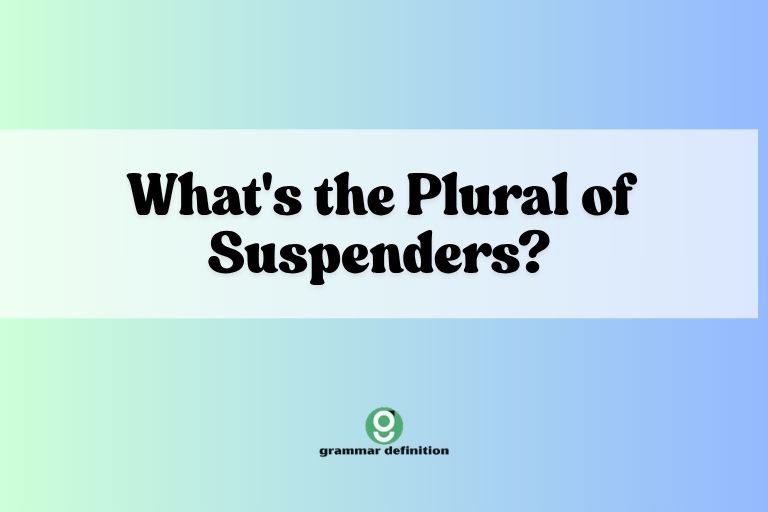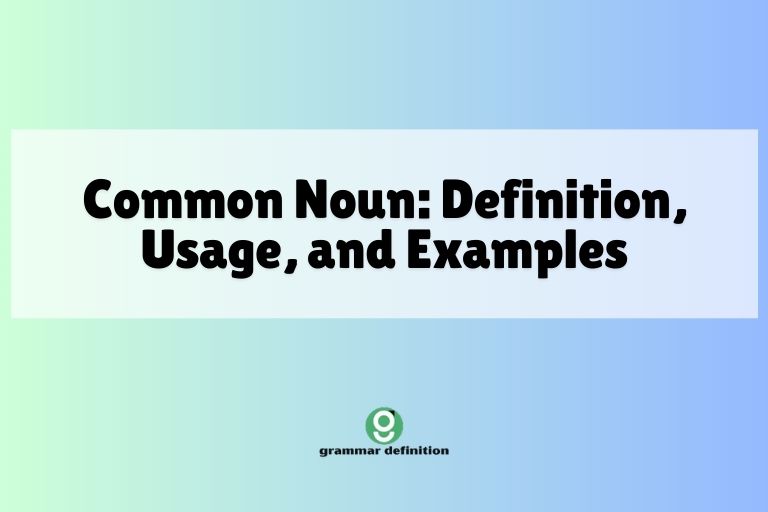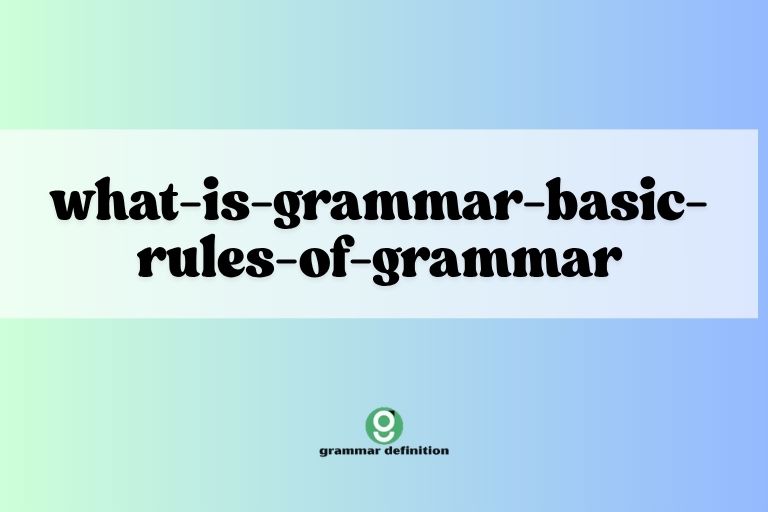What’s the Plural of Analysis? Mastering English Grammar

Understanding the plural forms of nouns, especially those derived from other languages, is crucial for effective communication in English. The word “analysis,” frequently used in academic, professional, and everyday contexts, often presents a challenge when it comes to forming its plural.
Knowing the correct plural form, “analyses,” and understanding the grammatical rules behind it, is essential for clear and accurate writing and speaking. This article will provide a comprehensive guide to the pluralization of “analysis,” covering its definition, structural breakdown, usage rules, common mistakes, and providing ample examples and practice exercises.
Whether you are a student, a professional, or simply an English language enthusiast, this guide will equip you with the knowledge and skills to confidently use “analysis” and “analyses” in your writing and speech.
Table of Contents
- Introduction
- Definition of Analysis
- Structural Breakdown
- Types of Analysis
- Examples of Analysis and Analyses
- Usage Rules
- Common Mistakes
- Practice Exercises
- Advanced Topics
- FAQ
- Conclusion
Introduction
The English language, with its rich history and diverse influences, often presents unique challenges when it comes to grammar. One such challenge arises with the pluralization of certain nouns, particularly those borrowed from other languages like Greek or Latin.
The word “analysis” is a prime example. Its plural form, “analyses,” follows specific grammatical rules that are not always intuitive to native English speakers or learners.
Mastering these rules is not just about avoiding grammatical errors; it’s about enhancing clarity, precision, and credibility in your communication. This article serves as a comprehensive guide to understanding the nuances of “analysis” and “analyses,” providing a solid foundation for correct usage and a deeper appreciation for the intricacies of English grammar.
Definition of Analysis
Analysis, in its singular form, refers to the detailed examination of the elements or structure of something, typically as a basis for discussion or interpretation. It is a process of breaking down a complex topic or substance into smaller parts to gain a better understanding of it. The term is used across various disciplines, including science, mathematics, economics, and literature, each with its specific methods and objectives for conducting an analysis.
Classification, Function, and Contexts
As a noun, “analysis” functions as a countable noun in its singular form and becomes countable in its plural form as well. It is commonly used in contexts that involve:
- Research: Conducting a thorough analysis of data to identify trends and patterns.
- Problem-solving: Performing an analysis of a problem to determine its root cause and potential solutions.
- Decision-making: Using analysis to evaluate different options and make informed decisions.
- Evaluation: Carrying out an analysis to assess the effectiveness of a program or policy.
- Interpretation: Providing an analysis of a text, artwork, or event to understand its meaning and significance.
Structural Breakdown
The word “analysis” comes from the Greek word analusis, meaning “a breaking up” or “solution.” This etymological origin explains why the plural form doesn’t follow the standard English rule of simply adding an “-s.” Instead, it adheres to the Greek pattern of changing the “-is” ending to “-es.” This pattern is consistent with other words of Greek origin, such as “crisis” (plural: “crises”) and “hypothesis” (plural: “hypotheses”). Understanding this historical context helps to remember the correct plural form.
The transformation from singular to plural involves a change in the suffix: -is becomes -es. This is a key characteristic of nouns derived from Greek that end in -is. This grammatical rule is not exclusive to “analysis”; many other words of Greek origin follow the same pattern.
Types of Analysis
The term “analysis” is broad and encompasses various specific types depending on the field of study or application. Here are some common types of analysis:
Scientific Analysis
In scientific contexts, analysis often involves the systematic investigation of physical or chemical properties of substances. This could include chemical analysis, spectral analysis, or statistical analysis of experimental data.
Data Analysis
Data analysis involves the process of inspecting, cleaning, transforming, and modeling data to discover useful information, draw conclusions, and support decision-making. Techniques include regression analysis, cluster analysis, and time series analysis.
Financial Analysis
Financial analysis is the process of evaluating businesses, projects, budgets, and other finance-related transactions to determine their performance and suitability. This includes ratio analysis, trend analysis, and investment analysis.
Literary Analysis
Literary analysis involves the close reading and interpretation of literary texts, focusing on elements such as theme, character, plot, and style. This type of analysis aims to understand the deeper meaning and significance of the work.
Statistical Analysis
Statistical analysis uses mathematical methods to collect, organize, summarize, and analyze data. It’s used to identify patterns, test hypotheses, and make predictions based on data.
Examples of Analysis and Analyses
Using the correct form of “analysis” and “analyses” is crucial for clear and accurate communication. The following tables provide numerous examples of both forms in various contexts.
Examples of “Analysis” (Singular)
The following table provides examples of “analysis” used in singular form in various sentences. Pay attention to how “analysis” is used as a subject, object, or part of a prepositional phrase.
| Sentence |
|---|
| The analysis of the data revealed a significant trend. |
| We need to conduct a thorough analysis of the market before launching the new product. |
| Her analysis of the poem was insightful and thought-provoking. |
| The doctor ordered an analysis of the patient’s blood sample. |
| His analysis of the situation was accurate and helped us make the right decision. |
| The company hired a consultant to perform an analysis of their business processes. |
| The analysis focused on the key factors that contributed to the company’s success. |
| A detailed analysis is required to understand the complexities of this issue. |
| The analysis presented in the report was comprehensive and well-supported. |
| The professor gave a brilliant analysis of the historical event. |
| The forensic analysis helped to solve the crime. |
| Further analysis is needed to confirm these findings. |
| The analysis showed a clear correlation between the two variables. |
| His final analysis was presented at the conference. |
| The analysis of the artwork was quite detailed. |
| Her analysis of the situation was spot on. |
| This analysis provides a new perspective on the problem. |
| The analysis was performed using advanced statistical methods. |
| Our initial analysis suggests that there are several issues. |
| The analysis of the survey results was very thorough. |
| The analysis of the chemical compound was essential. |
| His analysis of the financial reports was very detailed. |
| Her analysis of the political situation was insightful. |
| The analysis of the marketing campaign was highly successful. |
| The analysis revealed some interesting patterns. |
Examples of “Analyses” (Plural)
This table illustrates the use of “analyses” as the plural form of “analysis” in sentences. Notice how the plural form is used when referring to multiple instances of analysis.
| Sentence |
|---|
| The report included several analyses of the company’s financial performance. |
| The scientist conducted multiple analyses to confirm the results. |
| The literary critic presented several analyses of the novel. |
| The doctor reviewed the analyses of the patient’s medical tests. |
| The economist presented various analyses of the economic trends. |
| The team performed numerous analyses to identify the root cause of the problem. |
| The research paper included several analyses of the data. |
| The consultant provided detailed analyses of the company’s operations. |
| The historian wrote several analyses of the historical events. |
| The software performed several analyses of the system’s performance. |
| These analyses provide a comprehensive overview of the situation. |
| Several independent analyses confirmed the initial findings. |
| The different analyses yielded similar conclusions. |
| The analyses were conducted using various methodologies. |
| These analyses helped us to understand the problem better. |
| The analyses of the soil samples revealed high levels of contamination. |
| The analyses of the market trends were presented in the report. |
| These analyses are essential for making informed decisions. |
| The analyses showed a consistent pattern across different datasets. |
| The different analyses each focused on a different aspect of the problem. |
| The analyses of the customer feedback were very insightful. |
| Multiple analyses were required to understand the complex issue. |
| The analyses of the financial data were quite detailed. |
| Several analyses were conducted to compare different investment strategies. |
| The analyses revealed that the project was on track. |
Comparison Table: Analysis vs. Analyses
This table provides a direct comparison of “analysis” and “analyses,” highlighting their usage, meaning, and context.
| Form | Meaning | Usage | Example |
|---|---|---|---|
| Analysis (Singular) | A detailed examination of the elements or structure of something. | Used when referring to a single instance of examination or evaluation. | The analysis of the data was crucial for the project’s success. |
| Analyses (Plural) | Multiple detailed examinations or evaluations of different things or aspects. | Used when referring to more than one instance of examination or evaluation. | The report included several analyses of the market trends. |
Examples in Academic Writing
The following examples are tailored for academic writing, demonstrating how to use “analysis” and “analyses” in research papers, essays, and dissertations.
| Sentence |
|---|
| The analysis presented in this paper challenges conventional wisdom on the subject. |
| Our analyses of the primary sources revealed new insights into the historical context. |
| Further analysis is needed to validate these preliminary findings. |
| Several statistical analyses were performed to test the hypotheses. |
| This chapter provides an in-depth analysis of the theoretical framework. |
| The analyses of the survey data are presented in Appendix A. |
| The analysis focuses on the impact of globalization on local economies. |
| The professor requested a detailed analysis of the assigned reading. |
| The student’s analysis of the play was insightful and well-researched. |
| The dissertation included multiple analyses of different case studies. |
| The analysis of variance (ANOVA) was used to compare the means of the groups. |
| The analyses of the interviews were coded using thematic analysis. |
| This analysis builds upon previous research in the field. |
| The analyses presented here offer a new perspective on the problem. |
| The study involved a comprehensive analysis of the literature. |
| The analyses of the data were conducted using SPSS software. |
| The analysis of the political discourse revealed underlying biases. |
| The analyses were based on a large sample size. |
| This analysis contributes to the existing body of knowledge. |
| The analyses of the experimental results were carefully documented. |
| A critical analysis of the methodology is provided in the next section. |
| The analyses of the qualitative data were particularly insightful. |
| This analysis aims to provide a comprehensive overview of the topic. |
| The analyses of the various factors were presented in the final report. |
| The analysis of the financial statements revealed some concerning trends. |
Examples in Professional Contexts
This table provides examples of “analysis” and “analyses” in professional settings, such as business reports, presentations, and project documentation.
| Sentence |
|---|
| The market analysis indicated a strong demand for the new product. |
| Our team conducted several analyses to assess the feasibility of the project. |
| The financial analysis showed that the investment was profitable. |
| The report includes detailed analyses of the competitive landscape. |
| The risk analysis identified potential threats to the project’s success. |
| The company performed multiple analyses to optimize its supply chain. |
| The data analysis revealed key insights into customer behavior. |
| The consultant provided a comprehensive analysis of the company’s operations. |
| The team conducted numerous analyses to improve the efficiency of the process. |
| The performance analysis showed that the team was exceeding its goals. |
| The analysis of the customer feedback was very useful. |
| Several analyses were completed to assess the impact of the new policy. |
| This analysis is essential for making informed business decisions. |
| The analyses of the project’s risks and benefits were presented to the board. |
| The analysis of the sales data revealed some unexpected trends. |
| The analyses of the financial statements were reviewed by the auditors. |
| This analysis provides a clear understanding of the market dynamics. |
| The analyses were conducted by a team of expert consultants. |
| This analysis contributes to the development of the new strategy. |
| The analyses of the customer surveys provided valuable insights. |
| A thorough analysis of the competition is needed. |
| The analyses of the various marketing campaigns were carefully evaluated. |
| The analysis of the project’s budget was approved. |
| The analyses of the data showed clear trends. |
| The analysis of the market helped us make better decisions. |
Usage Rules
The correct usage of “analysis” and “analyses” depends on whether you are referring to a single instance or multiple instances of examination or evaluation. Here are some key rules to keep in mind:
- Use “analysis” when referring to a single instance of a detailed examination or evaluation.
- Use “analyses” when referring to multiple instances of detailed examinations or evaluations.
- Ensure that the verb agreement matches the noun form. Use singular verbs with “analysis” and plural verbs with “analyses.”
Example of correct verb agreement:
- The analysis shows a clear trend. (Singular)
- The analyses show a clear trend. (Plural)
Exceptions and Special Cases
There are no significant exceptions to the pluralization rule for “analysis.” However, it’s important to be aware of related terms and their specific usages. For example, the term “meta-analysis” refers to a statistical technique for combining the results of multiple studies.
Its plural form is “meta-analyses,” following the same rule.
Common Mistakes
One of the most common mistakes is using “analysis” as a plural form or incorrectly pluralizing it by adding just an “-s.” Another common error is mismatching the verb agreement with the noun form. Here are some examples of common mistakes and their corrections:
| Incorrect | Correct | Explanation |
|---|---|---|
| The report included several analysis. | The report included several analyses. | “Analyses” is the correct plural form. |
| The analyses shows a clear trend. | The analyses show a clear trend. | Plural nouns require plural verbs. |
| We performed an analyses of the data. | We performed an analysis of the data. | “Analysis” is the correct singular form. |
| The data analysis were completed. | The data analyses were completed. | “Analyses” is the correct plural form in this context. |
Practice Exercises
Test your understanding of “analysis” and “analyses” with the following exercises. Choose the correct form of the word to complete each sentence.
Exercise 1: Fill in the Blanks
Choose the correct form (analysis or analyses) for each sentence.
| Question | Answer |
|---|---|
| 1. The researcher conducted a detailed ________ of the data. | analysis |
| 2. The report included several ________ of the market trends. | analyses |
| 3. Further ________ is needed to confirm these findings. | analysis |
| 4. The scientist performed multiple ________ to validate the results. | analyses |
| 5. The ________ of the poem was insightful and thought-provoking. | analysis |
| 6. The doctor reviewed the ________ of the patient’s blood samples. | analyses |
| 7. The economist presented various ________ of the economic situation. | analyses |
| 8. A thorough ________ of the problem is required to find a solution. | analysis |
| 9. The ________ showed a clear correlation between the two variables. | analysis |
| 10. These ________ provide a comprehensive overview of the study. | analyses |
Exercise 2: Correct the Errors
Identify and correct the errors in the following sentences.
| Question | Answer |
|---|---|
| 1. The report included several analysis of the data. | The report included several analyses of the data. |
| 2. The analyses shows a clear trend in the market. | The analyses show a clear trend in the market. |
| 3. We need to perform an analyses of the current situation. | We need to perform an analysis of the current situation. |
| 4. The data analysis were conducted by a team of experts. | The data analyses were conducted by a team of experts. |
| 5. His analysis of the situation were very insightful. | His analysis of the situation was very insightful. |
| 6. Multiple analysis were performed to assess the risk. | Multiple analyses were performed to assess the risk. |
| 7. The different analysis yielded similar results. | The different analyses yielded similar results. |
| 8. The student’s analysis of the book were well-written. | The student’s analysis of the book was well-written. |
| 9. The financial analysis indicate a strong growth potential. | The financial analysis indicates a strong growth potential. |
| 10. The report presented a detailed analysis’ of the market. | The report presented a detailed analysis of the market. |
Exercise 3: Sentence Completion
Complete each sentence using either “analysis” or “analyses” in a grammatically correct way.
| Question | Answer |
|---|---|
| 1. After conducting several ________, the team was able to identify the root cause of the problem. | analyses |
| 2. The ________ of the survey data revealed some surprising trends. | analysis |
| 3. The economist’s ________ of the current economic climate was very insightful. | analysis |
| 4. The scientist performed a series of ________ on the soil samples. | analyses |
| 5. The final report included a detailed ________ of the project’s performance. | analysis |
| 6. The ________ of the literary work focused on the author’s use of symbolism. | analysis |
| 7. The financial ________ indicated that the company was in a strong position. | analysis |
| 8. The team conducted multiple ________ to assess the risks associated with the new venture. | analyses |
| 9. Further ________ is required to determine the long-term effects of the policy. | analysis |
| 10. The ________ of the customer feedback helped the company improve its services. | analysis |
Advanced Topics
For advanced learners, it is helpful to delve into more complex aspects of noun pluralization, including the historical evolution of these rules and the nuances of usage in different dialects of English. Understanding the etymology of words like “analysis” provides valuable insights into why they follow specific grammatical patterns.
Additionally, exploring the concept of “zero plurals” (nouns that have the same form in both singular and plural) can further enhance your understanding of English noun morphology.
Another advanced topic is the use of “analysis” and “analyses” in highly specialized fields, such as advanced mathematics or theoretical physics. In these contexts, the terms may have very specific meanings and usages that differ slightly from their general definitions.
Consulting specialized dictionaries and style guides is recommended for learners working in these fields.
FAQ
Here are some frequently asked questions about the pluralization of “analysis”:
-
Why is the plural of “analysis” “analyses” instead of “analysises”?
The word “analysis” comes from Greek, and in Greek, nouns ending in “-is” form their plural by changing “-is” to “-es.” This pattern is followed in English for words of Greek origin.
-
Is it ever correct to use “analysis” as a plural?
No, it is never correct to use “analysis” as a plural form in standard English. The correct plural form is always “analyses.”
-
How do I remember the correct plural form?
Think of other words of Greek origin that follow the same pattern, such as “crisis” (plural: “crises”) and “thesis” (plural: “theses”). Remembering this pattern can help you recall the correct plural form of “analysis.”
-
What is the difference between “analysis” and “assessment”?
“Analysis” involves a detailed examination of something to understand its components and their relationships. “Assessment” is a broader term that refers to the evaluation or appraisal of something’s value, quality, or importance. An assessment might include an analysis, but it also involves judgment.
-
Can “analyses” be used in all contexts where multiple instances of analysis are present?
Yes, “analyses” is the correct plural form to use whenever you are referring to more than one instance of analysis, regardless of the context.
-
What are some common words that follow the same pluralization rule as “analysis”?
Some common words that follow the same pluralization rule include: axis (axes), basis (bases), crisis (crises), hypothesis (hypotheses), and thesis (theses).
-
Is “data analysis” singular or plural?
“Data analysis” is a singular term referring to the process of analyzing data. When referring to multiple instances of this process, you would say “data analyses.”
-
How do I ensure that my verb agreement is correct when using “analysis” and “analyses”?
Use a singular verb with “analysis” (e.g., “The analysis shows…”) and a plural verb with “analyses” (e.g., “The analyses show…”). Always check that your verb matches the number of the noun.
Conclusion
Mastering the pluralization of nouns like “analysis” is a key step towards achieving fluency and accuracy in English. By understanding the etymological origins of the word, the specific grammatical rules that govern its plural form, and the common mistakes to avoid, you can confidently use “analysis” and “analyses” in your writing and speaking.
Remember to practice regularly, pay attention to verb agreement, and consult reliable resources when in doubt. With consistent effort and attention to detail, you can master the nuances of English grammar and communicate effectively in any context.






